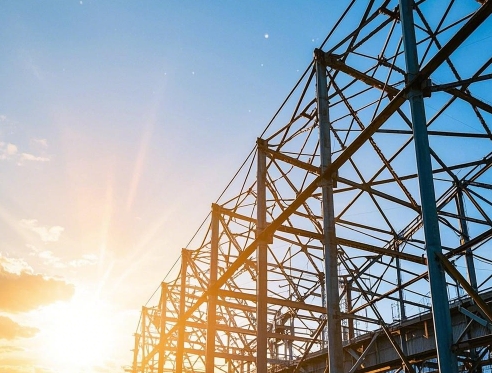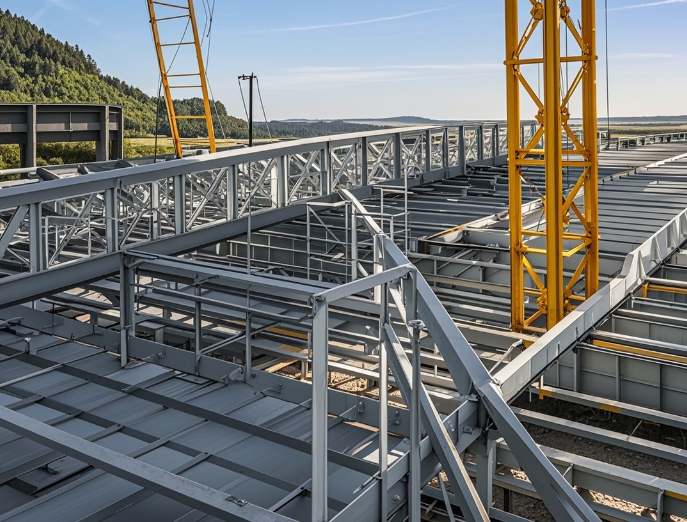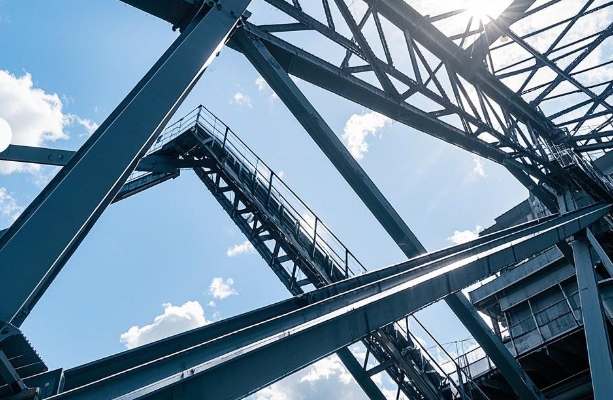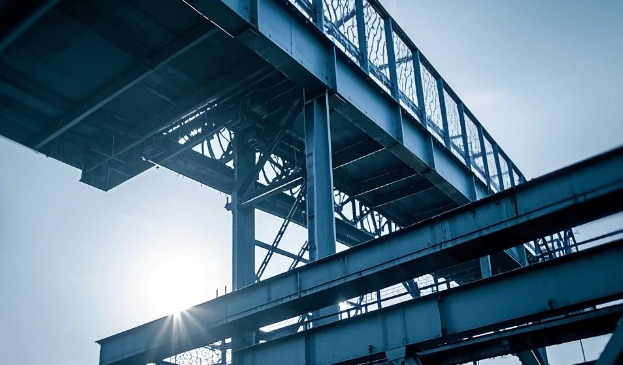Detailed analysis of steel structure construction steps
更新时间:2025-01-24 13:20:57•点击:36224 • Entreprise's news

In the field of modern architecture, steel structures are widely used in various construction projects due to their significant advantages such as high strength, light weight, fast construction speed, and recyclability. Understanding the construction steps of steel structures is crucial for ensuring project quality, ensuring construction safety, and controlling construction progress.
Preparation before constructionDesign drawing review: The construction team needs to carefully study the design drawings, clarify key information such as the overall layout, component dimensions, and connection methods of the steel structure, and ensure that the construction is consistent with the design requirements. At the same time, promptly communicate with the design unit to resolve any issues in the drawings.
Construction site planning: Reasonably plan the construction site, set up material stacking areas, component processing areas, mechanical equipment parking areas, etc., to ensure the orderly storage and use of construction materials and equipment. The site should be flat and solid, meeting the walking and operation requirements of large mechanical equipment.
Material and equipment preparation: According to the design requirements, purchase qualified construction materials such as steel, welding materials, bolts, etc., and strictly review their quality certification documents. At the same time, prepare the necessary mechanical equipment for construction, such as cranes, welding machines, gas cutting equipment, measuring instruments, etc., and debug and maintain the equipment to ensure its good performance.
foundation construction
Basic positioning and laying out: Based on the design drawings, use measuring instruments to accurately lay out the position and elevation of the foundation on the construction site, providing a reference for subsequent foundation construction.
Foundation excavation and pouring: The foundation excavation should be carried out according to the setting out position, and the excavation depth and size should meet the design requirements. Lay a cushion layer at the bottom of the foundation, then tie the steel bars, set up the formwork, and pour the concrete. During the pouring process, it is necessary to ensure the compaction of the concrete and avoid quality defects such as honeycombing and rough surfaces.
Installation of foundation bolts: Before pouring the foundation concrete, accurately install the foundation bolts in the design position, fix them firmly, and ensure that their verticality and elevation meet the requirements. Anchor bolts are key components that connect steel structures and foundations, and their installation quality directly affects the stability of the steel structure.
Component fabrication and transportation
Component production: In the steel structure processing plant, steel is cut, welded, drilled, painted and processed according to design drawings and construction specifications to produce steel structural components that meet the requirements. During the production process, it is necessary to strictly control the dimensional accuracy and welding quality of the components, and conduct non-destructive testing on key parts.
Component transportation: Transport the fabricated steel structural components to the construction site, and take effective protective measures during transportation to prevent deformation and damage to the components. For large components, it is necessary to arrange transportation routes and vehicles reasonably to ensure transportation safety.
On site installation
Component lifting: Use a crane to lift steel structural components into place in the designed order, first installing steel columns, and then installing steel beams, supports, and other components. During the lifting process, it is necessary to set up lifting points to ensure that the components are lifted smoothly and avoid collisions and shaking. At the same time, real-time monitoring and adjustment of the position and verticality of the components are carried out through measuring instruments.
Connection and fixation: Connect and fix the components that have been lifted into place, commonly using connection methods such as welding and bolt connection. When welding, it is necessary to control the welding process parameters well to ensure the welding quality; When connecting bolts, they should be tightened according to the prescribed torque to ensure the reliability of the connection.
Structural correction: During the installation of steel structures, real-time monitoring and correction of the overall dimensions, verticality, deflection, etc. of the structure are carried out to ensure that it meets the design requirements. When there is a deviation in the structure, timely adjustment measures should be taken, such as adjusting the position of components, replacing connectors, etc.
Maintenance and testing
Coating maintenance: After the installation of the steel structure is completed, the coating on the surface of the components should be inspected and maintained, and damaged parts should be repaired in a timely manner to ensure the anti-corrosion performance of the steel structure.
Quality inspection: Conduct comprehensive quality inspection on steel structures, including appearance inspection, size review, weld seam inspection, bolt tightening force inspection, etc., to ensure that the quality of steel structures meets design and specification requirements. Regularly inspect and maintain steel structures, promptly identify and address any issues within the structure, and ensure its safe use.
Steel structure construction is a complex and systematic project, with each construction step closely interconnected and interdependent. Only by strictly following the construction steps and regulatory requirements, strengthening quality control and safety management during the construction process, can we ensure the smooth completion of steel structure engineering and create high-quality, safe and reliable building structures.
If you have a need for a deeper understanding of the details in each construction step, or if you would like to supplement actual cases, please feel free to let me know and I will further improve the content.
Recommended Reading
-
Full analysis of seismic design and maintenance of grid structure
2025-02-27 16:16:52•143434 次
-
What are the key process points to follow in order to ensure the quality of grid processing?
2025-02-27 11:21:00•27155 次
-
What type of construction is the grid mainly suitable for?
2025-02-25 16:42:00•32564 次
-
Quality control requirements of grid manufacturers!
2025-02-25 16:02:44•44009 次






